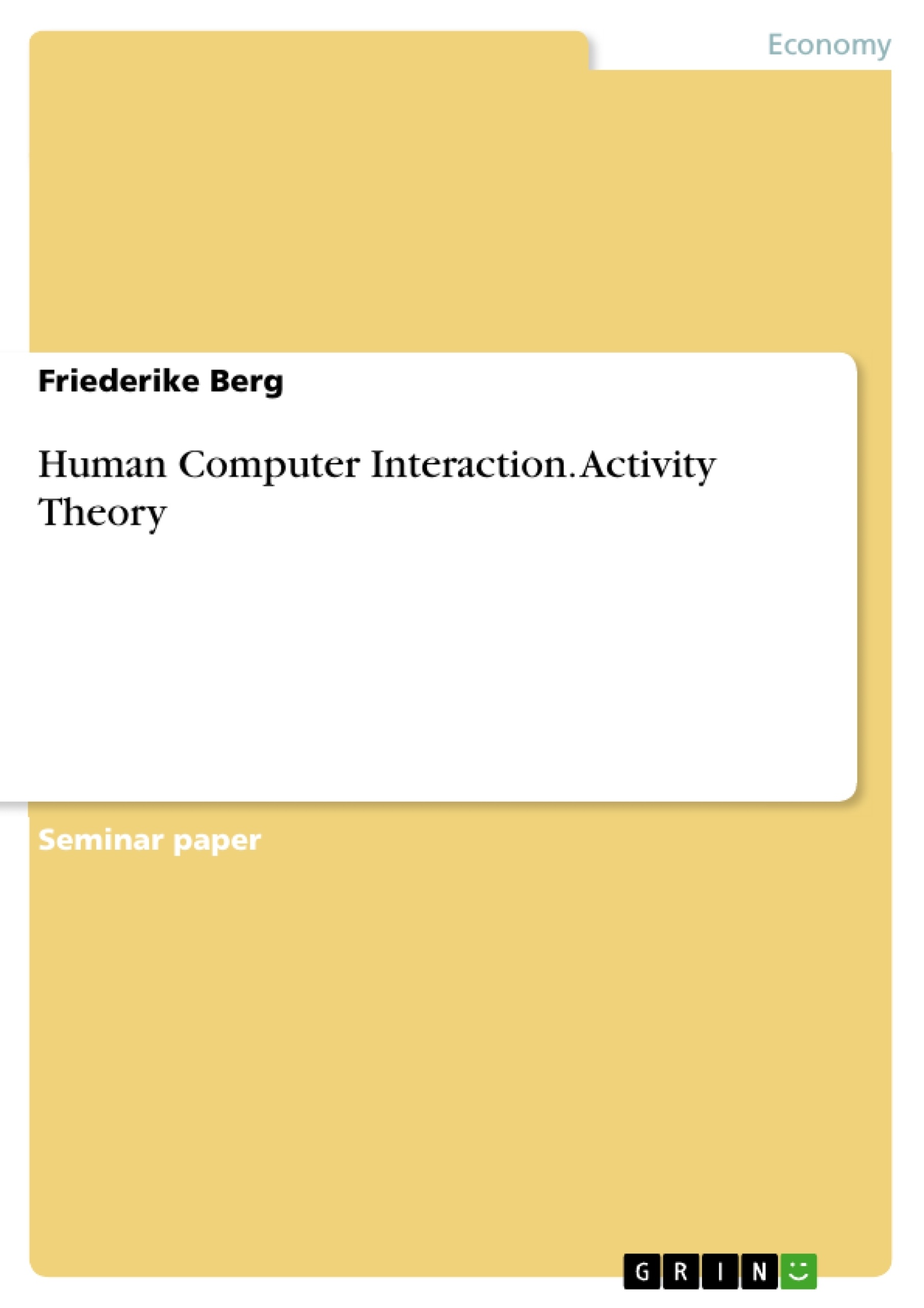Vygotsky, L., Leont’ev, A. N., and Luria, A. R. have invented the activity theory in the early 19th century (Miller, C., 2008). “Activity theory is a conceptual framework based on the idea that activity is primary, that doing precedes thinking, that goals, images, cognitive models, intentions, and abstract notions like “definition” and “determinant” grow out of people doing things” (Morf, M. E. & Weber, W. G., 2000, p.81).
Table of Contents
ACTIVITY THEORY
INTRODUCTION TO ACTIVITY THEORY
THEORETICAL STRUCTURE
EXAMPLES OF ACTIVITY THEORY
REFERENCES
BIBLIOGRAPHY
Activity Theory
Introduction to Activity Theory
Vygotsky, L., Leont'ev, A. N., and Luria, A. R have invented the activity theory in the early 191h century (Miller, C., 2008). "Activity theory is a conceptual framework based on the idea that activity is primary, that doing precedes thinking, that goals, images, cognitive models, intentions, and abstract notions like "definition"and "determinant"grow out of people doing things" (Morf, M. E. & Weber, W. G., 2000, p.81).
Theoretical Structure
The activity theory's general structure, formulated by Engestrom, Y., is presented in a subject and object-interaction that leads to an outcome. In addition, there are interacting elements tools, community, division of labor, and rules.It is visually presented as a triangle (Murphy, E., 2013). "The relationship between subject and object is mediated by tools. The relationship between subject and community is mediated by rules, and the relationship between object and community is mediated by the division oflabo[...]r. (Murphy, E., 2013, p.29).
Abbildung in dieser Leseprobe nicht enthalten
Figure 1. Activity theory's general structure (Interaction Design Foundation, 2018).
Furthermore, the activity theory consists of three hierarchical levels activities, actions and operations.
“These levels imply four basic principles […]. Firstly, a hierarchical structure: activities include actions and actions require operations. Activities have motives and can be understood as series of actions. Actions are goal-oriented and part of activities. The goal is to finish the activity. Thirdly, operations are executing actions. When users start to work with a system they have to get used to the system. So, actions are carried out consciously, over time these become unconscious actions, so called operations” (Kurosu, M., 2009, p. 341).
Abbildung in dieser Leseprobe nicht enthalten
Figure 2. Hierarchical structure of activity theory (Interaction Design Foundation, 2018).
Examples of Activity Theory
The next paragraphs describe three real-life examples of how you can apply activity theory. The first example is the company 1 Atelier that sells custom-made handbags. The framework describes the launch of a new style. To launch a new product, the company has to use pen, paper, a factory, production tools, leather, photo shots, photoshop, etc. to reach its object and outcome. The subject and the community, that consists of a factory, a headquarter, supplier’s showroom, and a photo studio, are mediated by rules such as work hours, deadlines, lunch, and customer feedback. The division of labor CEO, designer, production team, suppliers, product manager, etc. mediates between the community and the object.
The action is the launch of a style that is forced by generating revenue through sales from customers. Primary operations are the design of the style by the designer, the prototyping in the factory from the production team, the creation of assets by the graphic designer to make it accessible on the website as well as the coding of the assets in the online customizer by the front- end and back-end developer.
Abbildung in dieser Leseprobe nicht enthalten
Figure 3. Example 1 -Launch of a style (2018).
The second example frames the market launch of an e-law learning game as app. It is provided by a game designer and programmer that make it accessible to law students, students with interest in law, and people that learn law as a hobby. They use the following tools photoshop, software, phone, game editor, and textadventures.co.uk to implement this project. There are two rules deadlines and “spend as much free time as you can” that guide the two men through this project. Both subjects are surrounded by lawyers, students, and a consultant for gamification to ensure an outcome that gets positive feedback. Hereby, the division of labor consists of law knowledge & techniques, brainstorming, coding, designing, developing, and implementing.
The action is the access to an e-law learning app game for students that is forced by the idea to make it accessible to the target group, equal object, through a game designer and programmer. Primary operations are the brainstorming of how the game app should look like as a team that consist of the game designer, the programmer and the consultant, the designing of the interface with photoshop by the game designer with advice from lawyers, the developing/coding of the game app with game editor and textadventures.co.uk by the programmer as well as the implementation through the subjects.
[...]
- Citar trabajo
- Friederike Berg (Autor), 2018, Human Computer Interaction. Activity Theory, Múnich, GRIN Verlag, https://www.grin.com/document/505676
-

-

-

-
¡Carge sus propios textos! Gane dinero y un iPhone X. -

-
¡Carge sus propios textos! Gane dinero y un iPhone X. -

-
¡Carge sus propios textos! Gane dinero y un iPhone X. -

-
¡Carge sus propios textos! Gane dinero y un iPhone X. -

-
¡Carge sus propios textos! Gane dinero y un iPhone X.

